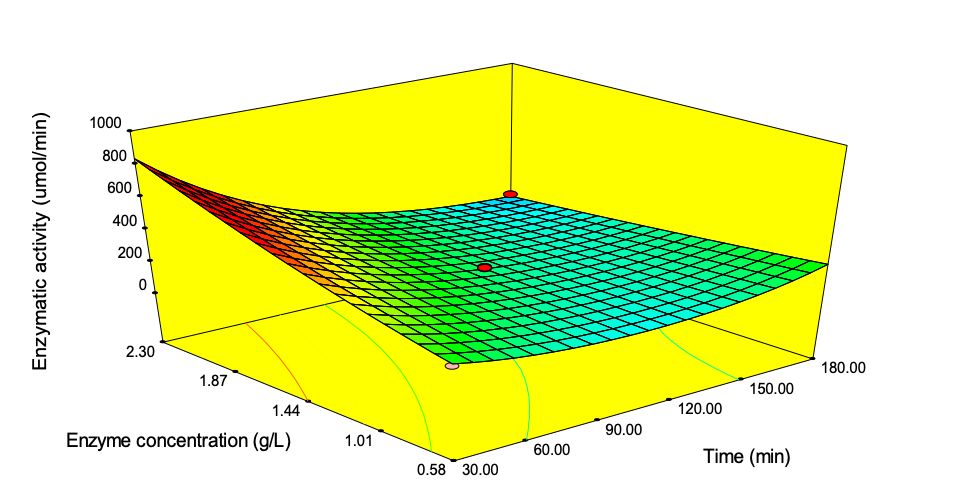 |
|
Lactose has been a sugar of limited applicability in the food industry due to its low level of sweetness, low solubility and poor
digestion in most of the global population. However, from the world production of whey, a high production volume of this
disaccharide could be obtained and be enzymatically hydrolysate to produce sweeter sugars, very soluble in water and easily
digestible like glucose and galactose. This study was proposed to optimize the process of hydrolysis of a commercial enzyme
( -galactosidase of Kluyveromyces lactis) in a concentrate of lactose (207 g L-1), obtained by nanofiltration of sweet whey. A
Box-Behnken response surface design allowed the evaluation of the influence of several factors on the percentage of hydrolysis,
indicating that it is possible to obtain up to 84.5% by combination of the following process conditions: pH (6.11); temperature
(37.20 ºC); enzyme concentration (1.36 g L-1) and time (176 min). The hydrolysate obtained was valued, finding minerals
such as potassium: 0.3 g 100g-1, magnesium: 0.020 g 100g-1, calcium: 0.060 g 100g-1, phosphorus: 0.09 g 100g-1, glucose:
89 g L-1, galactose: 66 g L-1 and CIELAB coordinates: L* = 32.3, a* = -0.5 and b* = 15.
Keywords: UV-C irradiation, Aloe vera, acemannan, polyphenols, aloin A
.
|
|
 |

